Designing and developing a new product is no simple feat, as any engineer, product designer, or developer knows too well. Challenges range from understanding the target customer’s preferences, to developing products that balance functionality and simplicity, and even considering how a product might connect to the Internet and what security risks this poses to end users. Weigh these challenges against the ever-increasing pressure to come up with the “next big thing” that hasn’t been done before, and you have your work cut out for you as a new product developer.
To gain some valuable insights into the top challenges faced throughout the new product development process, we asked a panel of designers, developers, and engineers to answer this question:
“What’s the #1 issue or challenge product designers, developers or engineers face when developing new products?”
Find out what our experts had to say below.
Meet Our Panel of Product Design, Development, and Engineering Experts:
 Greg Scott
Greg Scott
@DGregScott
Greg Scott is a veteran of the tumultuous IT industry. He currently lives in the Minneapolis/St. Paul metro area with his wife, daughter, and two grandchildren. He holds several IT industry certifications, including CISSP number 358671. He decided to write what would become Bullseye Breach after becoming frustrated from too many sensational headlines about preventable data breaches.
“In this coming IoT world, the top challenge all new product development teams should be thinking about is…”
Security. Somehow, some way, all those new devices all be interconnected, and somebody out there will want to penetrate them for some evil purpose. Beyond the basic function of the device, every designer and engineer should be thinking about how that device interacts with the new Internet and how and why an attacker might want to penetrate it. And be creative.
Am I nuts? What could a criminal do with, say, a thermostat controlled remotely from a cell phone? Could an unscrupulous contractor freeze the house, burst the water pipes, and then make lots of money from the repair? How about remotely controlled door locks? Baby cams? What about marshalling thousands of devices into a new type of botnet to launch a DDOS attack against somebody? Sound far-fetched? Too much like science fiction to be true? But then, who would have predicted even a few months ago that North Korea could take down a major movie studio. Or that Russians would steal millions of credit cards. Or Chinese violate the privacy of millions of U.S. Government workers and security applicants.
So maybe the new generation of product developers will learn lessons from their predecessors.
 Craig Wolfe
Craig Wolfe
@CelebriDucks
Craig Wolfe is the President of CelebriDucks and Cocoa Canard.
“Top issues we face in our industry when it comes to new product design are two things…”
Since we are the top custom duck manufacturer in the world, we get asked all the time to come up with amazing designs. But here’s the thing: In our medium, you have to keep all the features tight with no extreme undercuts so it will still come out of mold. Also, we have to deal with floating issues, so that affects our design. And in doing all this, the number one mantra for our industry is: Whatever the design limitations, you have to make it cute. The client must always be shown the reality of what is possible!
That being said, we are the best in the biz at that and, in fact, just returned the whole rubber duck industry back to the USA where it was intended to be. We’re the only ones making them here once again. Now, we are bringing a second factory online with a whole new set of variables. How do you create the same rubber duck, but one that is PVC-free and made out of a medical and food grade material that will still be soft and float upright…AND make it 100% in the USA? That’s what we are working on now. When you have to design things that are hollow in the inside and still have to float upright with cutting-edge materials, you are really in uncharted territory. We expect to have this new product on the market in September!
 Diane E Piper
Diane E Piper
@BORSAbag
Diane E Piper is the designer of the BORSAbag and President of BORSAbag, LLC.
“As a new entrepreneur, the #1 challenge I faced in designing a new product was…”
After making a crude prototype myself, I needed to find a manufacturer. It was and remains to be extremely important to me to have BORSAbag made in the USA. It took over two years to be able to find a manufacturer that would make my product here. The first manufacturer sent my prototype to China; the second manufacturer took 14 months to send me a prototype. Finally, I was successful. Perseverance paid off.
 Meghan Khaitan
Meghan Khaitan
@MyBuckleMate
Meghan Khaitan is the founder of MyBuckleMate. A must-have for carpools and road trips, MyBuckleMate keeps back seat buckles propped up and easy to reach so buckling up is always a snap! No more buckles flopping around, falling into seat pockets, or getting wedged under booster seats — buckles always stay where you can easily reach them. It is the perfect seat belt solution for kids in booster seats, those with special needs or motor planning difficulties, and adults with limited mobility and arthritis.
“In my experience, the most important considerations in new product design are…”
At MyBuckleMate, the design and prototyping process was rigorous, but the design for manufacturing really made the difference. We spent months developing prototypes from several ideas and drawings and tested these to ensure that the product would stand up to the highest quality standards possible. But once we decided on our best final design and were ready to talk about tooling, we took a look at the product from an entirely new viewpoint: How can we design it more simply and elegantly to optimize quality and cost in manufacturing?
Great design doesn’t always translate well into a product that’s affordable or easy to make. The differences between our original design and the MyBuckleMate you see now are dramatically different. We started with a concept that had several molded parts at three times our current cost. We now have a patented product made of two identical, mirror-image parts that we can afford to manufacture in the USA, where we have the ability to control and better ensure that all of our product quality specifications are met.
 Grainne Kelly
Grainne Kelly
@BubbleBumUSA
Grainne Kelly is a former travel agent who revolutionized the child travel industry by inventing BubbleBum: the world’s FIRST inflatable booster seat that weighs less than one pound and can deflate in minutes, making it simple to throw in a backpack or purse. She has also created the Junkie in-car organizer and Sneck backseat pillow.
“The most important thing to remember when it comes to new product design is…”
Sometimes designers get caught up in the beauty of the design and lose sight of the problem that the product is being invented to solve. For any design project, it is crucial and fundamental to constantly keep the problem for the target market in mind.
 Wendell Adams
Wendell Adams
@ABMobileApps
Wendell Adams is the CEO of AB Mobile Apps.
“Designing new products is very tough when…”
Trying to balance the four main desires of a project:
1) What the product owner/manager/boss wants it to do and look like
2) What the end user needs it to be for it to be a desirable experience
3) How it is going to function
4) How much the end product will cost
It is a constant push and pull between these four areas, as the product owner or boss has very specific, strong ideas on what it must do, and sometimes they do not see the big picture of everything that one small change of a feature will cause overall for the product. You want to balance it, though, so that a product can meet all of these areas; however, usually one wins out a little more than the others. Sadly, usually end-user needs are one of those things that will lose out to the other three areas fighting against them to lower cost, release on time, complete a feature, and be everything your boss or owner wants it to be. Countless examples exist of this conundrum: Google Glass, Apple Maps, HP Chromebook 11, Samsung Gear Smartwatches, and hundreds of smaller inventions, including many mobile apps. These products all failed initially because they focused to much on the three big things and not enough on the most important thing that makes a product a success. Google Search became popular because, first and foremost, it gave the end user the desirable experience they wanted. It has taken Google a long time to make sure it now also hits the other main components in product desires.
 Jackie Vanover
Jackie Vanover
@jackievny
Jackie Vanover is an innovative leader who works with corporate teams to fast-track product development from conceptualization through delivery. Her areas of expertise include building high-functioning teams, cooperative problem-solving, implementing Agile/Lean Methodologies, and innovation for Advertising Technology and Digital Media.
At MediaOcean (formerly Donovan Data Systems), Ms. Vanover held various strategic leadership roles. While Senior Vice President and General Manager of Digital Products, she led an 85-member integrated digital product development team to reinvent the next generation of workflow systems for both the digital and local broadcast advertising industry, which resulted in an 85 percent market share for the company.
Ms. Vanover holds an MBA in Marketing and Management from New York University and a Bachelor’s in Advertising and Public Relations from Texas Christian University. As a certified Transformational Coach, she utilizes her elite coaching skills to build teams that value a variety of viewpoints which results in faster development of quality products that sell. Passionate about health and wellness, Ms. Vanover, a Board Certified Holistic Health Coach, started RealLifeHealthy.com. The mission of which is to help women attain optimal health and more balanced and productive lives. She is also a Certified Pilates Instructor and a Triathlete.
“Two of the toughest challenges I’ve seen teams tackle when it comes to new product design are…”
1) Understand the customer’s point of view
2) Keeping a narrow focus
When designing a product, especially one where the idea is revolutionary, it’s easy to lose sight of the way the customers will interact with the product. Designers and engineers are so close to the product and understand the decisions and tradeoffs so intimately that they can lose track of the most important problems they need to solve. Because teams take on ownership of a product, when the customer questions a decision or doesn’t understand how the product works, they can become defensive and assume the customer is not smart enough to figure out the obvious. It’s easy to forget that the customer’s experience determines the success of the product and that we should always approach development with a beginner’s point of view.
Additionally, when teams are excited about solving a problem for customers, it’s easy to pile on unnecessary features. Most tempting are the cool features that are challenging to program because these make our work more interesting and fun. Development teams must remember that any feature not essential to solving the core customer problem clutters the user’s experience, complicates testing, and ultimately delays delivery.
As an Agile coach, I know teams are straying into murky waters when I hear designers and engineers start user stories by saying, “They might want to…” My response is always, “Has anyone asked for that?” If the answer is no, the feature goes into the backlog as a good idea. When a customer mentions a problem the feature will solve, then we move the idea to the top of the list.
 Delaney Gillian
Delaney Gillian
@WeAreRaster
Delaney Gillian is the lead application developer with Raster, a mobile innovation firm specializing in mobile app development and smart tech products. Gillian has over a decade of development and engineering experience.
“The biggest challenge in new product development for me as a developer is…”
Scope: Scope of what the client demands versus the actual scope of the users. The dichotomy forces extra workloads that cause many frustrations and lead to redesign/reworking of code. Engineers love to develop, but don’t like
reworking things that aren’t for efficiency’s or usability’s sake, but to appease a client.
 Garrett Houghton
Garrett Houghton
@artportme
Garrett Houghton is the founder of ArtPort, a digital portfolio-building platform and collaboration network for artists, and has a background in advertising, editorial, music recording, and product management. He currently works in digital advertising at Viacom and has written for MTV, VICE Magazine, and Thought Catalog, among many other publications.
“The biggest challenge I have when designing a new product is…”
Collaborating with the intended user base during the development process. I have a tendency to ideate and design in a vacuum, which can be creatively and individually fulfilling, but at the end of the day, a product has users, and it’s vital that product designers and developers gather feedback from users early and often in the development cycle. There is nothing worse than putting your head down in the sand and developing a beautiful product no one wants to use. I’ve done it before, which is why for my newest product, ArtPort, I built a bare-bones prototype first, tested it with a cohort of potential users, and used their feedback to help steer the product onto a more strategic development path.
 Brian Mitchell
Brian Mitchell
@SchneiderElec
Brian Mitchell is an experienced Engineer and Product Manager with Schneider Electric. With 8 years of professional experience, Brian has worked for Schneider Electric, Eaton, and Emerson, focusing on new product development. Brian holds Bachelor’s degrees in economics and mechanical engineering and a Master’s degree in mechanical engineering from the Missouri University of Science and Technology, as well as an MBA in business from Baldwin Wallace College.
“The #1 problem facing engineers in terms of new product development is…”
A lack of customer knowledge. This includes things like how they make buying decisions, how they use the product, and what the user’s key challenges really are. As a new product designer, I found that solid engineering principles only go so far toward creating a great design.
Much more important, and much more difficult to find, is understanding who will buy the product and why. Aggressively pursuing interactions with all levels of customers, including partners, resellers, and end users, gives designers the tools they need to design products that are marketable and fit in with the company’s strategy and distribution. This approach creates a win-win-win situation for the designer, the company, and the customer!
A sincere understanding of customers isn’t taught in school, and it is often difficult to find even on the job. Those designers and engineers who seek this understanding and hone their intuition about buyers’ preferences will rise above the pack.
 Sarah Rathke
Sarah Rathke
@spb_global
Sarah Rathke is a partner in the international law firm of Squire Patton Boggs. Her practice focuses on manufacturing and engineering litigation, and particularly complex supply chain disputes. She has argued and tried supply chain cases in forums throughout the United States. She is also a co-author of the upcoming book, Legal Blacksmith: How to Avoid and Defend Supply Chain Disputes.
“The number 1 issue or challenge in development projects is in…”
Trying to get the commercial terms of suppliers’ development work to match the engineering and design realities. So often, with development projects, the parties cannot be certain if the new product can be successfully designed in the needed timeframe, and within the needed budget. Engineers who plan development projects are almost always too optimistic in their estimates of how long a project will take, and how many resources it will require. Unfortunately, however, these early estimates become the basis of the parties’ legally binding contract. This creates problems between collaborating companies, when one or more of them begins to feel that the new project is not going to be as profitable as originally believed.
The best way to avoid this, in my experience, is for the engineering parties (suppliers and buyer) not to set production terms in stone before development is complete. In addition, it helps when collaborating parties impose frequent milestones on the development project — no less frequently than once per month — at which point, someone with authority from both contracting parties can make a determination as to whether the project is still a go or a no-go.
 Dr. Jim Cairns
Dr. Jim Cairns
Dr. Jim Cairns is the author of The Inventor’s Complete Handbook and owner of Abyssal Systems. Cairns’ career as a successful independent inventor spans over half a century, with more than 50 granted and pending U.S. patents, and many foreign ones. He invented and pioneered technology that permits subsea electrical and fiber-optical devices to be plugged and unplugged at the greatest ocean depths. That capability has had a major worldwide impact on scientific and commercial operations in the deep sea. For his technical contributions Cairns has received the Marine Technology Society’s Compass Distinguished Achievement Award and the Marine Technology Society’s Lockheed Martin Award for Excellence in Marine Science and Engineering. These are two of the highest awards granted in the field of undersea technology. In 2003 he established the Cairns Foundation, Inc., which is a non-profit organization dedicated to supporting creative minds. The Foundation supports bright, financially disadvantaged students and funds selected university engineering capstone projects.
“The #1 issue facing product designers, developers and engineers is…”
How they can successfully develop, patent and commercialize their ideas.
 Greg Patterson
Greg Patterson
@shotguntool
Greg Patterson, President of ShotgunTool.com, has 40 years of experience in international business, engineering, and marketing/sales. He has run, bought, sold, and acquired companies, in addition to his 30 years of international sales experience in over 30 countries.
“The number-one problem faced by engineers, developers, and designers in new product development is…”
A tendency to overcomplicate what could be a simple solution for the end user.
When product designers get wrapped up in the world of design, they over-invest time in trying to find that “perfect solution.” As a direct result, we may ignore the simplest, most effective solution and instead develop one that is
overly complex for the end user.
I find that it is always best to keep the solution simple. In order to do so, product designers should modify the design over and over — a part here, changing a complex linkage there — until the solution is as simple to the user as it is to the designer.
 Greg Sterndale
Greg Sterndale
@PromptWorks
Greg Sterndale is a Senior Software Engineer and Co-Founder of PromptWorks, a Philadelphia-based consulting shop delivering customized web and mobile web applications which has grown into a multi-million dollar business in less than two years. A notable presenter and keynote speaker, Greg taps into more than 15 years of software engineering and new media experience as a leader of the company and shares his insights regularly on the speaker circuit in the Greater Philadelphia area. Prior to co-founding PromptWorks, he held posts at several technology companies, including Jana and Plectix Biosystems. He attended Emerson College.
“The #1 challenge for those developing a new product is…”
Validating its fundamental offering(s). If a product’s core offering is flawed, any other issues quickly become irrelevant. Doing this validation well means starting small, and building a product with just enough value so that research and analysis can be done on customers to inform future development.
 Ian Henderson
Ian Henderson
@rubricinc
Ian Henderson is the chairman, CTO and co-founder of Rubric. He has a deep knowledge of globalization issues, technology, and distributed team management. Prior to Rubric, Ian worked in various management and engineering positions at Siemens (Germany), Expert Software and Phoenix Software (New Zealand), and Berlitz (England).
“Across all industries, product developers and engineers are challenged to…”
Design applications that offer a satisfying experience to all users — no matter where in the world they are located. A big part of that, of course, is making the product comprehensible in those users’ languages. This is something that is often an afterthought in the product design and development process.
Translating products for foreign markets is about preserving the logic, experience, and benefits of the original design. Certain phrases, graphics, and images in your user interface might make sense in one language but not in another, and can throw off its look and feel. For example, translating a short English phrase into Spanish might result in a much longer sentence that creates jumbled, cut-off, or overlapping text on your app.
Product designers, developers, and engineers should consider working closely with translation teams to overcome these issues. Localization specialists can help ensure troublesome phrases and images are replaced with appropriate alternatives that make your products easy to use in any language. Retaining English-language software strings each time a product is developed and translated is essential, so linguists have the context they need to understand which changes to make, and so as not to introduce new engineering issues.
 Dephillia McClenon
Dephillia McClenon
@DephilliaJMcCle
Dephillia McClenon is the founder of Candor Health Products, LLC.
“I am a self-taught product developer. The most challenging things for me in new product development were…”
- Developing a product for the masses
- Educating consumers about the benefits of the new product developed
- Listening to outside people on changes they thought were needed to enhance the product and making the changes
- Sticking with the product until you have a fully functioning ready for market prototype
- A lot of lonely days and nights
 Samantha Cohen
Samantha Cohen
@neonbandits
Sammy and Dan Cohen are young and hungry entrepreneurs who recently teamed up to bring a new concept in socks, action lifestyle socks to be exact, to market. The duo defines sibling thrivalries.
“The biggest challenge with new product design is…”
Starting somewhere. That first rendering or drawing always carries so much weight that it is hard to start with absolutely nothing, knowing that this design is going to through the absolute ringer to get to a place that could even be sampled, or be brought to market.
 Fabian Backer
Fabian Backer
@BackerFabian
Fabian Backer is the Community Manager for i.materialise.
“To overcome several problems in the process of product design (limited time & resources) more and more companies are relying on…”
3D printing technology to create their product or at least a rapid prototype.
Examples from startups are this steel bottle or this smart keychain. These Apple Watch gadgets also show how 3D printing changes the way we design products nowadays.
We (i.materialise) are an online service for these kind of products. Users simply upload their 3D designs and choose the size and material they want (even wood or titanium is possible). They see the price for their products instantly and can then decide to order. We print the parts on our industrial printers and ship them out. So it’s quite an easy process.
 George Ramonov
George Ramonov
@Qlockwise
George Ramonov is CTO and Founder at Qurious, helping teams make faster, smarter decisions in meetings with Qlockwise. He trained in Electrical Engineering and Computer Science at UC Berkeley. He cares about artificial intelligence, algorithms, game mechanics, and design thinking.
“The main challenge I face as a product designer and engineer is that…”
Team members may not necessarily see what I see until the product is fleshed out and presentable. This requires a trade-off between the core competency of the product versus the product’s user interface. It’s a rare skill to be able to see beyond a bare user interface and provide feedback on a product’s potential. As a result, developers and designers often need to produce something that portrays what they see in their mind, while balancing trade-offs between time to build the product and the product’s visual appeal.
 Jon Quigley
Jon Quigley
@ValueTransform
Jon M. Quigley is the author of several books on project management and product development topics, including software development. Mr. Quigley has multiple masters level degrees as well as certifications. He is also a frequent speaker at industry events. He has more than twenty-five years of product development experience, ranging from embedded hardware and software design to verification and project management. He has taught at Technical Schools as well as at Seattle City University. He is on the Forsyth Technical Community College Advisory Board and Western Carolina University MPM Advisory Board. He is an expert contributor to PM2Go by The Standish Group, and is frequently cited in product development, project management, and business magazines.
“The biggest challenges faced by developers and engineers in new product development are…”
Focus:
Companies have always desired to get the most out of their human resources/talent. There is limited talent in the organization and there is often little desire to extend headcount. In many cases, hiring additional people is really not possible, so management works to get the most out of the available resources. However, watering down the available talent and diffusing resources over multiple projects can be a source of difficulty for the developer due to a lack of focus. Unless the organization is employing a true form of Agile project management, we may find that our team spends so much time transitioning from project to project and task to task that they are unable to give the focus the item under scrutiny deserves. Our team members may offset this by working long hours, but that comes with a downside also. More hours spent working does not translate to greater productivity, and there are many studies which suggest that additional hours over time wears the individual down to a point where a recovery period is required. That is, the individual must work fewer than the typical work week (40 weeks) for weeks on end to recover effectively, erasing any benefit that may have been gained due to the extended work hours.
Streamlining the work processes, providing time for talent to focus on the objective, and recognizing the limits of pushing people to beyond the 40 hour work week can help alleviate these types of problems.
Distributed work:
There was a time when teams were often co-located, enabling quick communication and collaboration. It can still be quick with the level of connectivity technology provides; however, there is much to the saying, “Out of sight, out of mind.” I have seen many developers make decisions on their portion of a project unilaterally, not really aware of the consequences put upon some other person, either in the team or a depending department. When we put the parts from these individuals together, we find that significant portions may not work, as the design pieces diverged somewhere along the way. Distributed teams require some mechanism which ensures the individual’s efforts are connected to the rest of the development team, no matter where they are located in the world. The tools are there, but if the developer and the project management team are not aware of connectivity needs, we may realize too late in the project that key communication was missing. Late in the project means more money invested, and more time required to sort out the discrepancy. This creates a risk of late delivery and increased cost due to the need to rework portions of projects or projects in their entirety. I have seen this happen fairly frequently.
 Ferran Poveda
Ferran Poveda
@servizla
Ferran Poveda is the Senior iOS Developer at SERVIZ, where he is responsible for the development of the company’s mobile app.
“One of the biggest mistakes a team can make starting out is…”
Growing too quickly. My development team has benefited a lot from the fact that we are not very big, and our flexible organization is a Kanban-like system. Everyone is involved and caring about the team’s work, so we have a very interactive improvement process during development. Moving too fast during developmental stages could also mean missing details crucial for success. In my experience, the feedback offered from each member on your team and the refinements made based on them will have a powerful impact and, in my case, help you build an awesome app.
 Greg Scott
Greg Scott Craig Wolfe
Craig Wolfe Diane E Piper
Diane E Piper Meghan Khaitan
Meghan Khaitan Grainne Kelly
Grainne Kelly Wendell Adams
Wendell Adams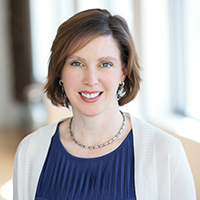 Jackie Vanover
Jackie Vanover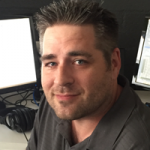 Delaney Gillian
Delaney Gillian Garrett Houghton
Garrett Houghton Brian Mitchell
Brian Mitchell Sarah Rathke
Sarah Rathke Dr. Jim Cairns
Dr. Jim Cairns Greg Patterson
Greg Patterson Greg Sterndale
Greg Sterndale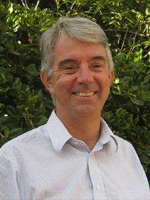 Ian Henderson
Ian Henderson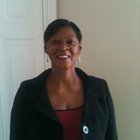 Dephillia McClenon
Dephillia McClenon Samantha Cohen
Samantha Cohen Fabian Backer
Fabian Backer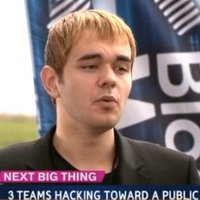 George Ramonov
George Ramonov Jon Quigley
Jon Quigley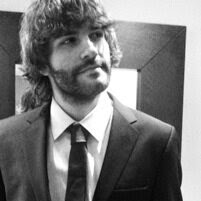 Ferran Poveda
Ferran Poveda
